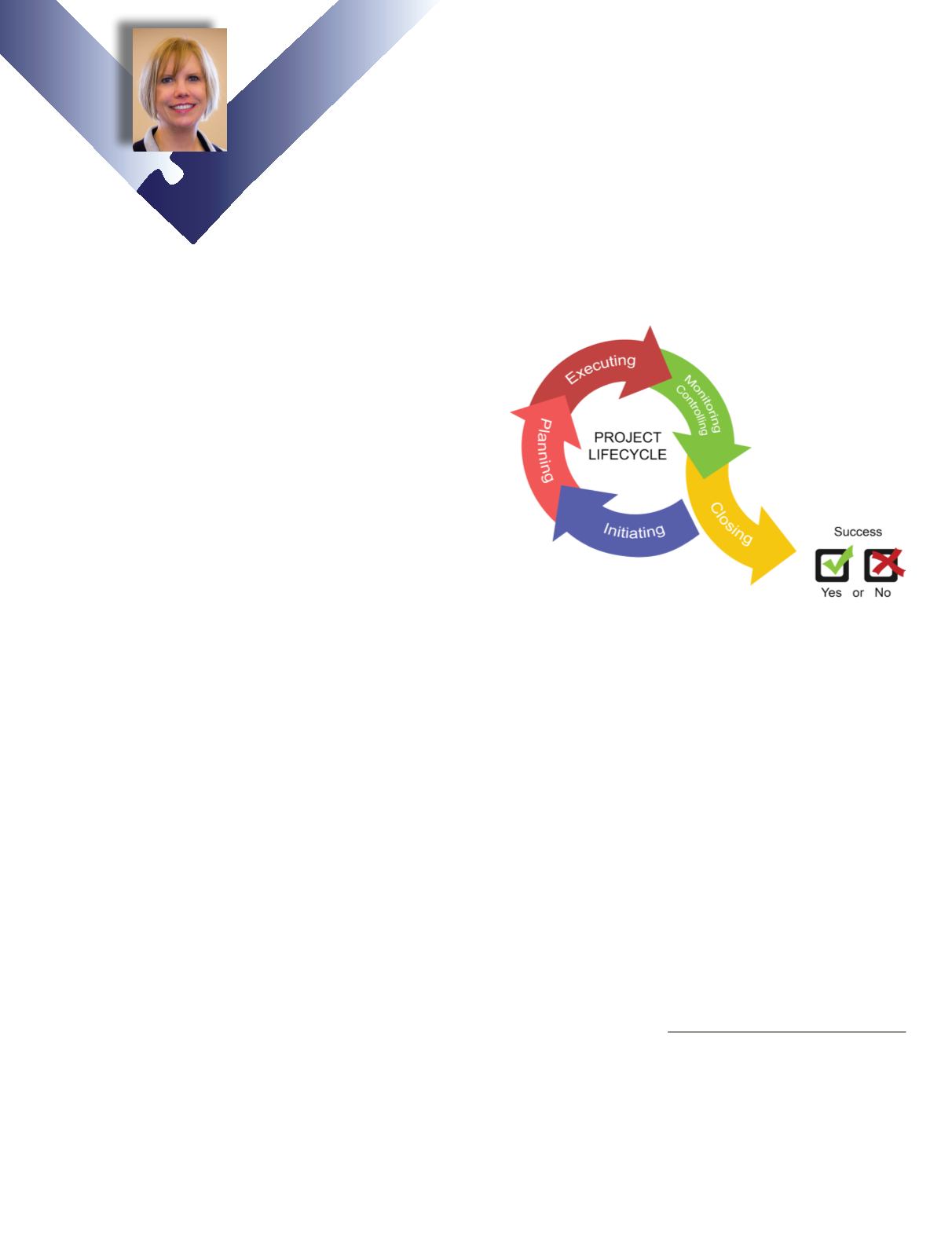
PHOTOGRAMMETRIC ENGINEERING & REMOTE SENSING
June 2016
399
P
roject
M
anagement
In the Geospatial Community
By Raquel Charrois PMP, CP, CMS | EVP
When growth occurs, a void develops. With the growth of the
project management profession, a number of organizations
have developed best practices, standards, lexicons, and
methodologies that they believe offer the best approach to
successful project, program, and portfolio management.
The Project Management Institute (PMI)
®
has emerged
as a global leader, and their Project Management Body of
Knowledge, The PMBOK
®
, is recognized as the preeminent
global standard for project management. It provides project
managers with the fundamental practice needed to achieve
organizational results and excellence in the practice of
project management.
I wanted to touch on the PMBOK
®
as it will be a frame of
reference for future columns. It offers a set of best practices
that PMI
®
has proven to be effective across all disciplines.
Simply put, it is industry agnostic. The tricky part is in
applying these practices to the individual, the project, and
the industry. These are guidelines after all, not a recipe with
specific steps and ingredients that tell you exactly what to
add, when, and how. It is the scope of work, project managers,
business needs, and industry that drive what the individual
recipe may look like. And as with all recipes, an individual
may prefer to, or simply be required to, make changes.
How the PMBOK
®
is referenced and applied may differ across
individuals, businesses, and industries. That is its strength.
Its design makes it scalable so that it can be referenced
through the evolution of business. It provides an operational
framework to managing any project.
No matter the tools available to them, no matter the path
any given Project Manager has taken to the point in their
career at which they stand, regardless of whether they are
there by tactical approach or serendipity, one thing unites all
of us and remains a constant: if something can go wrong, it
will. Controlling as much of the risk as we can and predicting
failures is key to a successful project.
As project managers, we are responsible for a project through
its entire lifecycle. During the project closeout phase, a
project is reviewed to determine if it is successful or not. This
is ultimately a grade assignment made directly to the project
manager’s performance.
The Project Management Professional (PMP)
®
and the Geospatial Profession—The Evolution: Part 2
While project success should be measured in terms of
completing the project within the constraints of scope, time,
cost, quality, resources, and approved risk, those categories
alone are very broad and subjective. They are effected by
such things as the culture of the business, the business
objectives, the strategic plan, and the tactical needs of the
time. As a company evolves, project success can be defined
differently by the various stakeholders.
The definition of project success varies greatly. The criteria
against which success is rated relative to scope, time, cost,
quality, resources, and approved risk tend to start out
simple and grow more complex as the business matures. It
is relevant to note that the Seller/Doer Model can in itself
demonstrate the same project management growth as
referenced in the phases below, only remaining as seller/doer
or seller and doer in terms of growth. It is not necessary to
grow in bodies to grow in project management knowledge as
discussed in the other phases.
Photogrammetric Engineering & Remote Sensing
Vol. 82, No. 6, June 2016, pp. 399–402.
0099-1112/16/399–402
© 2016 American Society for Photogrammetry
and Remote Sensing
doi: 10.14358/PERS.82.6.399


